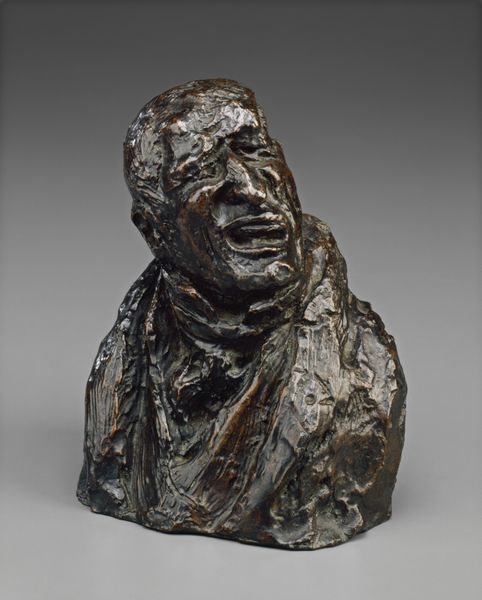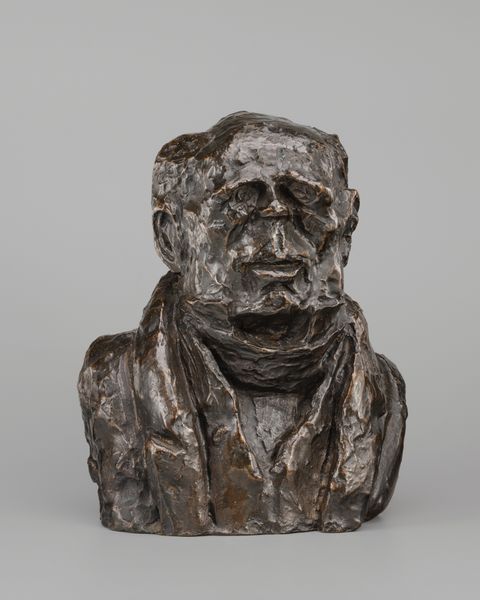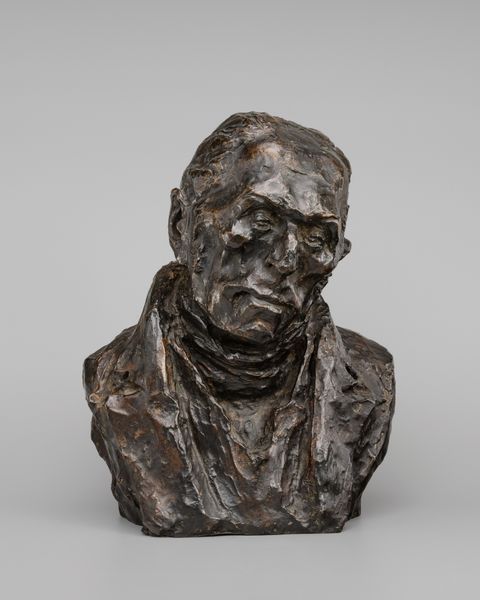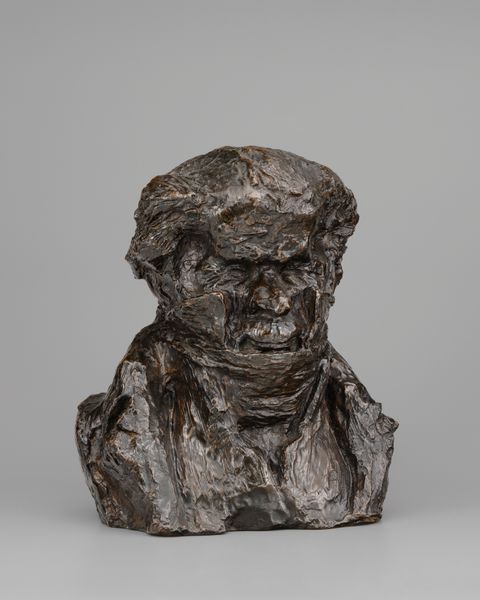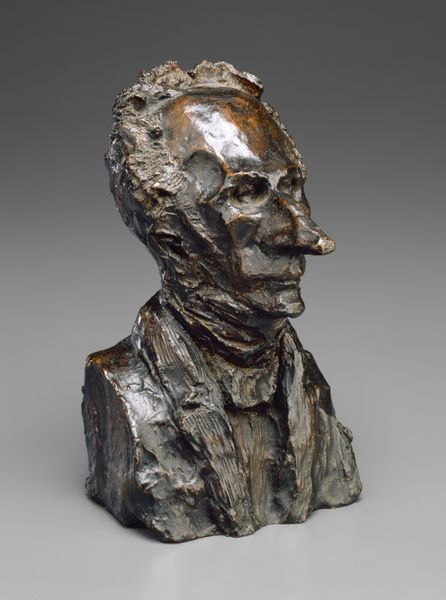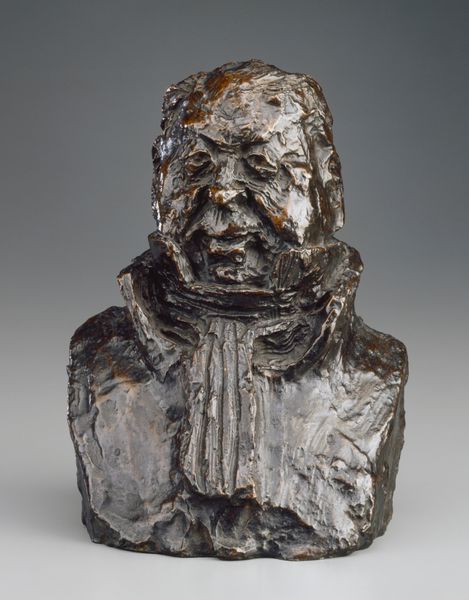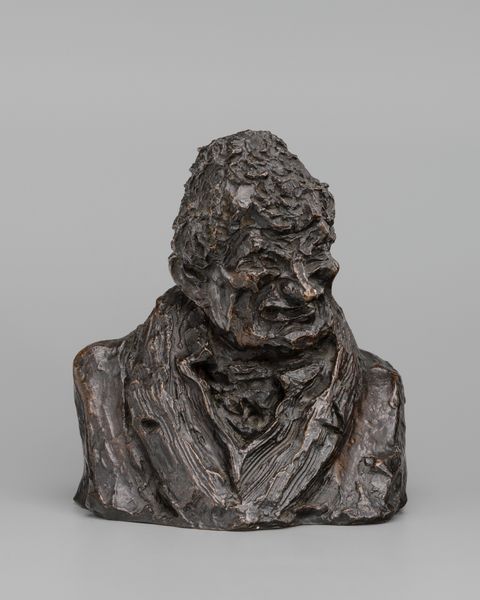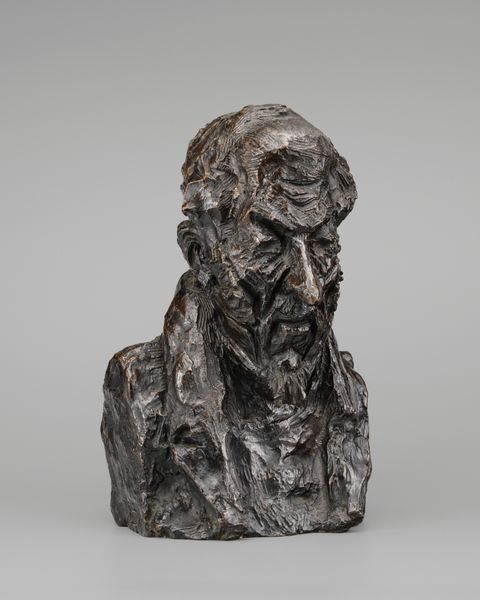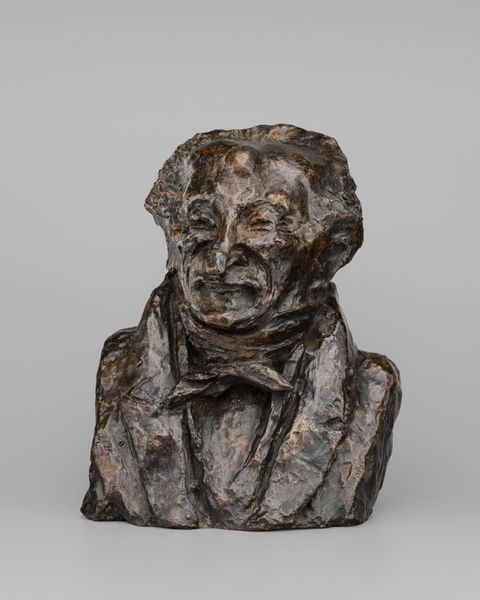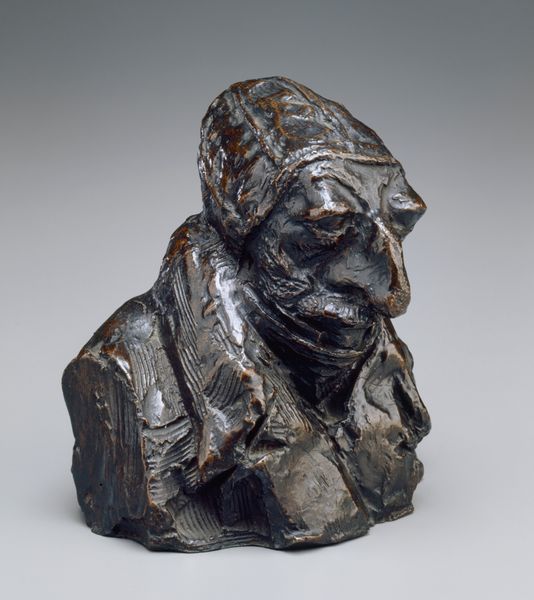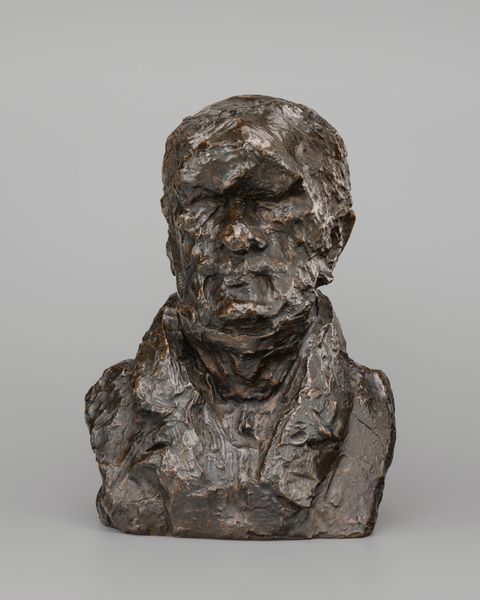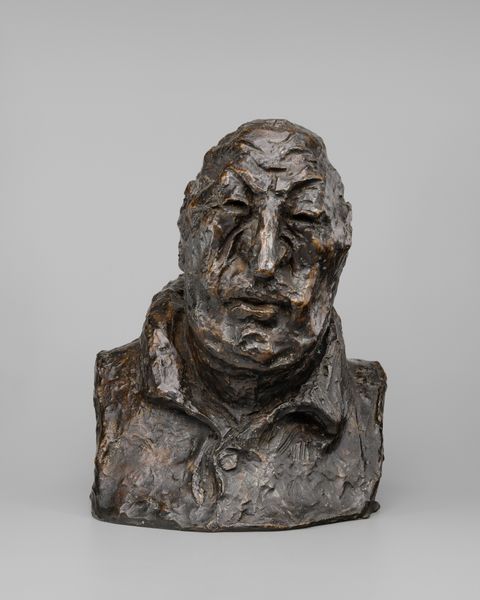
bronze, sculpture
#
portrait
#
16_19th-century
#
sculpture
#
bronze
#
sculpture
#
realism
Dimensions: overall: 14.6 x 14.9 x 9.2 cm (5 3/4 x 5 7/8 x 3 5/8 in.)
Copyright: National Gallery of Art: CC0 1.0
Editor: So here we have Honoré Daumier's bronze sculpture, "André-Marie-Jean-Jacques Dupin Aîné," made sometime between 1832 and 1835. It’s a strikingly honest portrait; the face seems to be caught mid-speech, and there’s almost a caricature quality to the features. What can you tell us about this piece? Curator: This bronze is especially insightful when considered alongside the lithographs Daumier was producing at the time. He was working during a period of intense political and social upheaval in France. How do you think this context might have informed his approach to portraiture, particularly this unflattering depiction of Dupin, a prominent lawyer and politician? Editor: I see what you mean. He seems to be accentuating less flattering aspects of Dupin's physiognomy to comment on, maybe even critique, his character or his role in society. Do you think this work intended for the Salon? Curator: Almost certainly not. Daumier's more critical and satirical works often found their audience through print culture, reaching a broader public beyond the confines of traditional art institutions. How effective do you find that mode, in comparison? Editor: That's interesting. So it's like he bypassed the traditional gatekeepers and went directly to the people to make a social statement. It gives the work a distinctly democratic edge. This kind of gives me another understanding on who and what artwork were made for and who are given privilege in certain time frames. Curator: Exactly. The bronze takes on new layers when we realize this wasn't merely a representation, but an act of challenging power and engaging in a dialogue with the public, right? Editor: Yes, a really provocative challenge to the establishment.
Comments
No comments
Be the first to comment and join the conversation on the ultimate creative platform.
